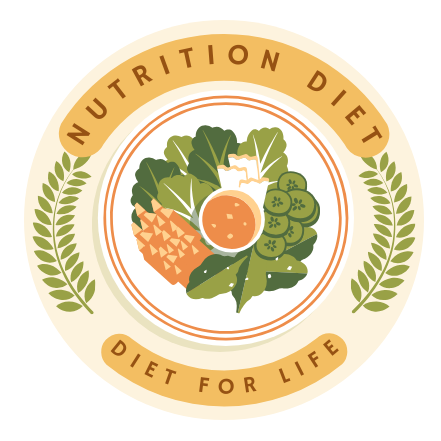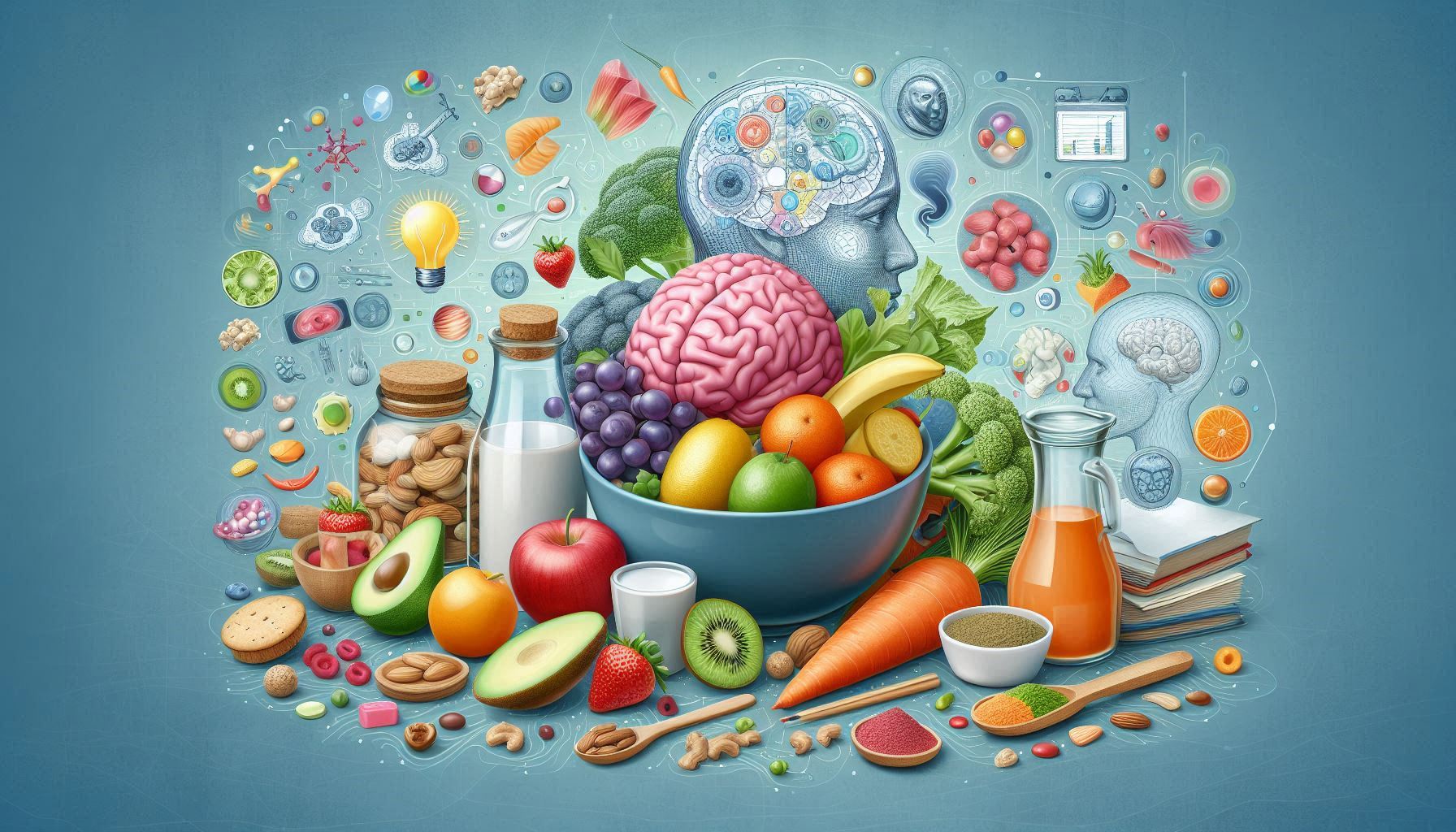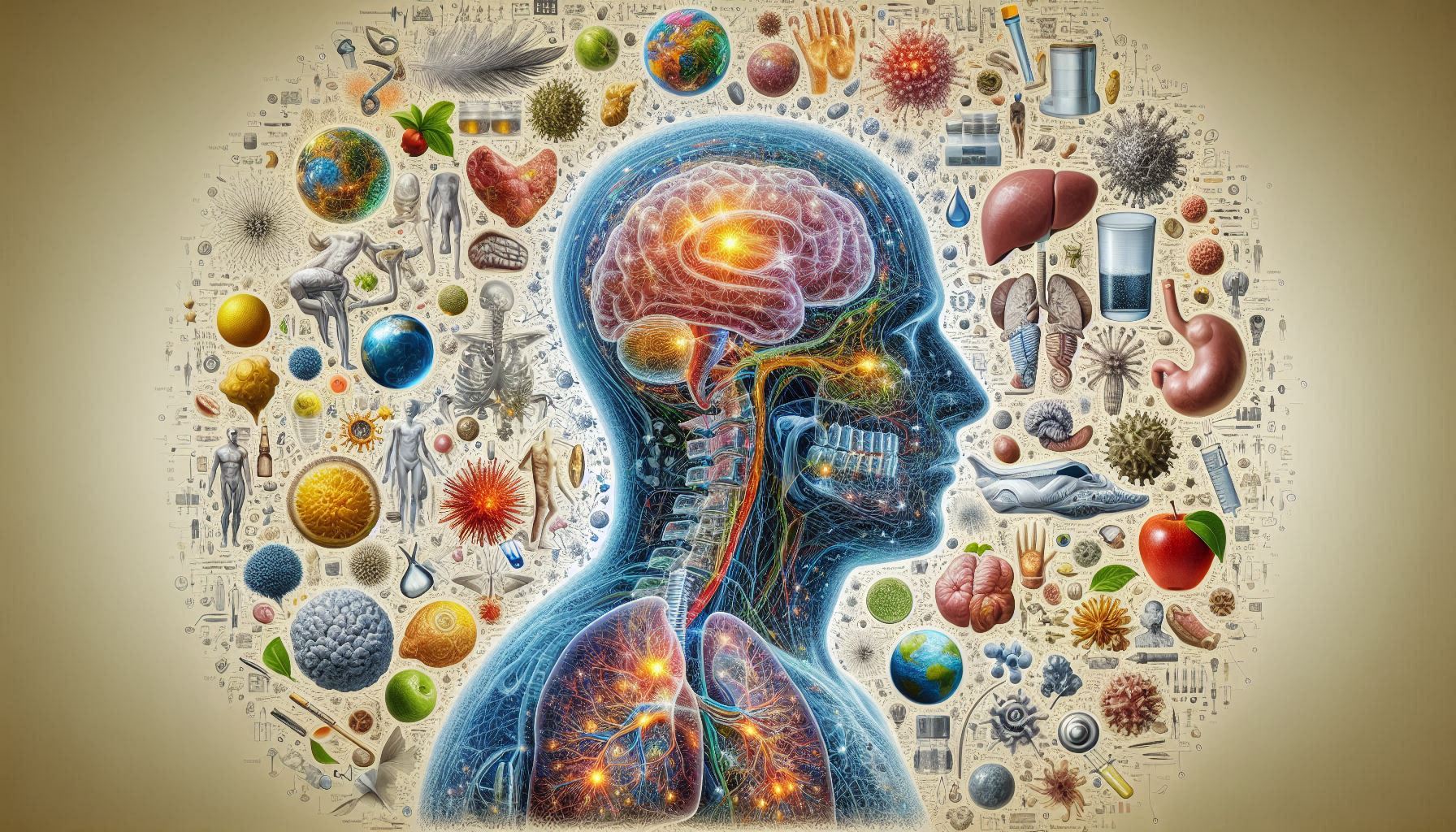Adolescence is a crucial period of rapid growth and transformation, characterized by significant physical, psychological, and cognitive changes. The nutritional choices made during this time are essential, as they play a pivotal role in shaping an individual’s long-term health, development, and future. Proper nutrition is not only vital for sustaining energy but also for supporting optimal growth, enhancing cognitive abilities, promoting mental health, and reducing the risk of chronic diseases later in life.
This guide highlights the profound influence of nutrition on adolescent health, focusing on its role in physical development, brain function, and overall well-being. It also addresses the connection between a balanced diet and future health outcomes, emphasizing the importance of nutrient-dense foods in preventing conditions such as obesity, type 2 diabetes, and heart disease.
Adolescents face numerous challenges in maintaining healthy eating habits, including peer pressure, social media influence, busy schedules, and economic limitations that can make it difficult to access nutritious foods. To counter these challenges, targeted interventions by parents, schools, and communities are necessary. Practical strategies include promoting nutrition education, encouraging balanced meals, and making healthy foods more accessible. By addressing these obstacles, we can support adolescents in developing lifelong habits for optimal health and well-being.
Nutritional Needs During Adolescence
Adolescents experience rapid growth spurts and significant changes in body composition, which create unique nutritional needs. Their bodies require a balance of macronutrients (carbohydrates, proteins, and fats) and micronutrients (vitamins and minerals) to support these processes. While the specific requirements vary from person to person, some general guidelines apply to the majority of adolescents.
Macronutrients
- Protein: Essential for building and repairing tissues, muscles, and organs, protein is vital during adolescence as the body grows and develops. Adequate protein intake supports the synthesis of enzymes, hormones, and antibodies, contributing to a strong immune system. Studies have shown that protein-rich diets can enhance muscle mass and overall strength in teenagers. High-quality sources of protein include lean meats, fish, eggs, dairy products, legumes, and plant-based alternatives like tofu and tempeh.
- Carbohydrates: The primary source of energy, carbohydrates are crucial for supporting the metabolic activities required for physical activity and growth. Complex carbohydrates like whole grains, fruits, and vegetables provide a sustained release of energy and help maintain stable blood sugar levels. Simple carbohydrates, found in processed foods and sugary drinks, can cause spikes in energy followed by rapid drops, leading to fatigue and irritability.
- Fats: While often misunderstood, fats are vital for overall health, especially in adolescent brain development. Healthy fats, such as those found in avocados, nuts, seeds, and oily fish, contribute to cell structure, hormone production, and brain function. Omega-3 fatty acids, in particular, are crucial for the development of the brain and nervous system. Sources include salmon, mackerel, flaxseeds, and walnuts.
Micronutrients
- Calcium: Bone health during adolescence is vital as bones are still growing and mineralizing. Adequate calcium intake helps build peak bone mass, which can prevent osteoporosis and fractures in later life. Dairy products, fortified plant-based milks, leafy green vegetables, and fish with bones (such as sardines) are excellent sources of calcium.
- Iron: Iron is essential for the formation of hemoglobin, the protein in red blood cells that transports oxygen throughout the body. Adolescents, especially girls who experience menstruation, have higher iron needs to compensate for blood loss. Iron-rich foods include lean meats, beans, lentils, fortified cereals, and dark leafy greens. Vitamin C-rich foods like oranges and strawberries can enhance iron absorption.
- Vitamin D: This vitamin plays a crucial role in calcium absorption and bone health. It is synthesized by the skin when exposed to sunlight but can also be found in fortified foods and fatty fish. Vitamin D deficiency can lead to bone weakness and conditions like rickets.
- B Vitamins: These vitamins, including B6, B12, and folate, play a significant role in energy metabolism, nervous system function, and the production of neurotransmitters. Adequate intake of B vitamins supports mood regulation, concentration, and overall cognitive function.
- Zinc and Magnesium: These minerals support the immune system, muscle function, and energy production. Zinc also plays a role in growth and cell repair, while magnesium is involved in over 300 biochemical reactions in the body.
The Role of Nutrition in Physical Growth and Development
The growth that occurs during adolescence is unparalleled, making nutrition during this period especially important. Growth includes increases in height, muscle mass, and organ development. The rate of growth varies but generally peaks during puberty, which occurs earlier for girls (typically between 10 and 14 years old) than for boys (typically between 12 and 16 years old).
- Growth Spurts and Their Nutritional Implications: During growth spurts, adolescents experience an accelerated rate of height increase and muscle development. Adequate caloric intake is essential to fuel this growth. Failure to consume enough calories and essential nutrients can result in stunted growth, delayed physical development, and lower bone density. Proper nutrition during these periods can maximize growth potential and ensure the development of healthy body composition.
- The Importance of Calcium and Vitamin D: Calcium and vitamin D are integral to bone health during adolescence. Bone growth and mineralization are most intense during this period, and the amount of bone mass built during adolescence directly impacts bone health in adulthood. Calcium contributes to bone density, while vitamin D supports the absorption of calcium from the digestive tract.
The Recommended Dietary Allowance (RDA) for calcium in adolescents aged 9-18 years is 1,300 milligrams per day, yet many teens fall short of this requirement. Studies have shown that insufficient calcium intake can lead to weaker bones and an increased risk of fractures. Vitamin D, on the other hand, is synthesized by the body through sunlight exposure, but during the winter months or for those living in areas with limited sun exposure, supplementation may be necessary. - Protein and Muscle Development: Muscle mass development is also critical during adolescence, particularly for those who engage in sports or physical activities. Protein intake supports the repair and growth of muscle tissue, especially after physical activity. Research has found that adolescents involved in strength training or sports have higher protein requirements to support muscle synthesis and recovery. Lean meats, fish, eggs, beans, and legumes are key sources that should be included in the diet.
- Cognitive and Brain Development: The adolescent brain is undergoing significant maturation and is particularly sensitive to nutrition. Nutrients play a pivotal role in brain structure, function, and cognitive processes such as memory, attention, and problem-solving.
- Omega-3 Fatty Acids and Brain Function: Omega-3 fatty acids are essential for brain health and development. They are a major component of brain cell membranes and are involved in the production of neurochemicals essential for brain function. Studies have linked higher omega-3 intake to improved cognitive performance, better memory, and a reduced risk of depression.
Fatty fish like salmon, mackerel, and sardines are rich sources of omega-3s, but for those who do not consume fish, flaxseeds, chia seeds, and walnuts provide plant-based alternatives.
The Role of Iron in Cognitive Development
Iron deficiency is one of the most common nutritional deficiencies among adolescents and can have profound effects on cognitive development. Without adequate iron, the brain’s ability to produce neurotransmitters and support energy metabolism is impaired, leading to reduced concentration, poor academic performance, and overall cognitive deficits. It is particularly important for female adolescents, as menstrual blood loss can deplete iron stores.
Vitamins and Cognitive Health
- B-Vitamins: B vitamins, including B6, B12, and folate, are vital for maintaining healthy brain function and supporting neurotransmitter synthesis. They are involved in the production of serotonin, dopamine, and other chemicals that regulate mood and cognitive function.
- Vitamin C: Vitamin C is known for its antioxidant properties and its role in protecting the brain from oxidative stress. It also aids in the absorption of iron, enhancing the function of the brain.
Mental Health and Emotional Well-being
Adolescence is not only a time of physical growth but also a period marked by emotional and psychological changes. Nutrition plays a significant role in influencing mood and mental health, with some foods contributing to better emotional well-being and others potentially exacerbating mood disorders.
The Impact of Diet on Mood and Mental Health
There is growing evidence to suggest that a diet high in processed foods, refined sugars, and unhealthy fats can lead to poor mental health outcomes. Studies have linked diets rich in fruits, vegetables, whole grains, and healthy fats to better mood and lower risks of anxiety and depression. A balanced diet helps maintain stable blood sugar levels, which can prevent mood swings and irritability.
Nutrient Deficiencies and Mental Health
- Omega-3 Fatty Acids: A deficiency in omega-3s has been linked to increased risks of depression and anxiety. Omega-3 supplementation has shown promise in improving symptoms of depression and supporting overall mental health.
- Magnesium: Known for its calming effects on the nervous system, magnesium plays a crucial role in stress management and relaxation. Low levels of magnesium are associated with anxiety and depression.
- Zinc: This trace mineral supports immune function and is involved in brain function. Zinc deficiency has been associated with cognitive dysfunction and an increased risk of depression.
The Gut-Brain Axis and Nutrition
The gut-brain axis refers to the connection between the gut and the central nervous system. The gut is home to trillions of microorganisms, collectively known as the gut microbiome, which play a significant role in regulating mood and cognitive function. Diets rich in fiber, probiotics, and prebiotics can promote a healthy gut microbiome, which in turn supports better mental health and reduced symptoms of anxiety and depression.
Long-term Health Outcomes of Adolescent Nutrition
The habits formed during adolescence often continue into adulthood, setting the stage for long-term health outcomes. Good nutrition during this stage can lead to a lower risk of chronic diseases such as type 2 diabetes, heart disease, and certain types of cancer. Conversely, poor dietary habits during adolescence can increase the risk of obesity, metabolic syndrome, and other chronic health conditions later in life.
- Obesity and Its Consequences: Obesity is a growing public health concern, and adolescence is a critical period where dietary habits can significantly impact long-term weight management. An unhealthy diet, particularly one high in added sugars and trans fats, combined with sedentary behavior, can lead to excess weight gain. Obesity during adolescence is associated with an increased risk of developing type 2 diabetes, cardiovascular disease, and certain types of cancer in adulthood.
- Chronic Disease Prevention Through Nutrition; Adolescents who consume a diet high in nutrient-dense foods, including fruits, vegetables, whole grains, and lean proteins, are more likely to maintain healthy cholesterol levels, blood pressure, and overall cardiovascular health. A balanced diet combined with regular physical activity helps manage weight and reduce the risk of chronic diseases.
Challenges to Maintaining a Healthy Diet
Despite the known benefits of good nutrition, adolescents face several challenges that can make maintaining a healthy diet difficult.
- Peer Influence and Social Media: Peer pressure and social media can play a significant role in shaping adolescents’ dietary habits. Trends promoting unhealthy eating, such as fast food and sugary snacks, can override the importance of balanced nutrition. Social media influencers often endorse products that are not always nutritionally sound, making it challenging for teens to make informed choices.
- Busy Lifestyles and Time Constraints: With academic pressures, extracurricular activities, and part-time jobs, adolescents may find themselves opting for convenient, processed foods instead of preparing balanced meals. Skipping meals or relying on fast food can lead to nutrient deficiencies and poor overall health.
- Economic Barriers: For some families, access to fresh fruits, vegetables, and other nutrient-dense foods is limited due to economic constraints. Processed and packaged foods, while more affordable, often contain high levels of unhealthy fats, sugars, and sodium, contributing to poor dietary habits.
Strategies to Promote Healthy Nutrition
To support better nutritional habits among adolescents, targeted strategies can be implemented by parents, schools, and communities.
- Education and Awareness: Educational programs that teach adolescents about the importance of a balanced diet and how to make healthy food choices can empower them to take responsibility for their nutrition. Schools and community centers can play a pivotal role by incorporating nutrition education into their curricula and providing resources for meal planning.
- Encouraging Healthy Eating Patterns: Promoting healthy eating patterns involves encouraging adolescents to eat meals that include a balance of macronutrients and micronutrients. Parents and guardians can model good eating habits, cook meals with their children, and involve them in grocery shopping and meal preparation.
- Accessibility to Healthy Foods: Community initiatives that provide access to affordable, fresh fruits and vegetables can help reduce food deserts and encourage healthy eating. Programs like school gardens, farmers’ markets, and subsidized produce delivery services can make a significant difference in communities with limited access to nutritious foods.
- Role of Schools and Policy Changes: Schools can contribute by ensuring that cafeteria meals meet nutritional guidelines and by promoting healthy snack options. Policies that restrict the sale of sugary drinks and high-calorie snacks in schools can also help students make healthier choices.
Conclusion
Nutrition during adolescence is vital for promoting healthy physical growth, cognitive development, mental well-being, and long-term health. A diet rich in essential nutrients, including fruits, vegetables, whole grains, lean proteins, and healthy fats, supports optimal growth and development. Conversely, excessive consumption of processed foods high in added sugars, unhealthy fats, and empty calories can contribute to obesity and chronic conditions such as type 2 diabetes and cardiovascular disease in adulthood. The adolescent years are critical for establishing lifelong eating habits that can significantly impact future health outcomes.
However, maintaining a balanced diet during adolescence comes with challenges. Peer pressure, social media trends, academic and extracurricular demands, and economic constraints often lead adolescents to opt for quick, unhealthy food choices. To counter these challenges, parents, schools, and communities must work together to promote healthier eating behaviors. This can be done through nutrition education, accessible healthy food options, and policies that encourage better food choices in schools.
Prioritizing nutrition during adolescence can empower young people to grow into healthy, well-nourished adults capable of leading active and fulfilling lives. With the right support and interventions, we can guide adolescents towards building positive habits that last a lifetime, reducing the risk of chronic diseases and enhancing overall quality of life.
SOURCES
Bazzano, L. A. (2005). The importance of the dietary pattern in adolescent nutrition. Journal of Adolescent Health, 36(2), 105-112.
Berkey, C. S., & Rockett, H. R. (2001). Longitudinal study of adolescent dietary patterns and health outcomes. American Journal of Clinical Nutrition, 74(5), 675-683.
Field, A. E., & Camargo, C. A. (2003). Overweight, obesity, and health outcomes in adolescence. Pediatric Obesity Journal, 2(3), 43-49.
Gonzalez, A. M., & Martinez, P. (2012). Nutritional needs of adolescents and their impact on physical and cognitive development. Nutrition and Health, 18(4), 329-340.
Harris, R., & Kershner, J. (2016). The role of omega-3 fatty acids in brain health during adolescence. Journal of Pediatric Nutrition, 34(6), 567-574.
Jiang, S., & McCollum, R. (2018). The relationship between micronutrient deficiency and mental health in adolescents. Journal of Adolescent Health and Psychology, 45(7), 799-805.
Lundqvist, A., & Nilsson, E. (2020). Calcium and vitamin D: Essential nutrients for bone growth and development in adolescence. Scandinavian Journal of Pediatrics, 110(3), 209-216.
Micha, R., & Peñalvo, J. L. (2017). Impact of dietary habits on obesity and long-term health outcomes in adolescence. Global Health Journal, 12(1), 15-22.
Patel, V., & Durkin, M. (2015). Psychological effects of poor nutrition in adolescence. International Journal of Mental Health and Nutrition, 22(4), 50-61.
Reilly, J. J., & McDowell, K. (2003). Dietary influences on childhood and adolescent obesity. Obesity Research and Reviews, 10(6), 540-548.
Sánchez, A. P., & Ruiz, L. (2019). The gut-brain axis: Its influence on adolescent mood and mental health. Nutrition Neuroscience Journal, 22(8), 639-650.
Smith, D. L., & Johnson, C. (2009). The influence of school nutrition policies on adolescent dietary habits. Journal of School Health and Wellness, 24(2), 107-115.
Stang, J., & Story, M. (2005). Adolescent nutrition and its impact on academic and social development. Journal of Adolescent Medicine, 28(4), 135-142.
Tan, M., & Hadi, A. (2018). Vitamin deficiencies and their link to cognitive dysfunction in adolescents. Journal of Pediatric Psychology, 43(5), 389-398.
Thompson, F. E., & Subar, A. F. (2013). The effects of diet on adolescent mental and physical health. Nutrition Review, 71(6), 546-553.
Wang, Y., & Lobstein, T. (2006). Global trends in childhood obesity and their impact on adolescent health. Obesity Studies, 14(4), 1013-1022.
Williams, S., & Houghton, C. (2011). The role of dietary intervention in promoting better mental health outcomes in adolescents. Psychological Medicine, 41(7), 1015-1023.
HISTORY
Current Version
November 27, 2024
Written By:
SUMMIYAH MAHMOOD




